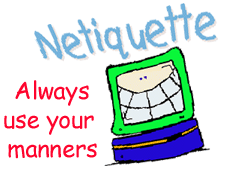At the end of this topic, we would able to:
In 2005, a survey has been conducted in US and the findings are:
More than 900 million users
About 90% use e-mail,
40% use instant messaging
20% use chat/forum
Interpersonal, organizational and educational online communication helps to:
E-Learning Online Communication
§ SELF - individual use of the internet
§ INTERACT – online communication with others
§ RELATE – skills for development of online relationships
§ PRESENT – presentation of oneself, product, organization
§ LEARN – finding, using and presenting educational info
§ PROTECT - related to internet security and privacy
Learning Networks & Communication Skills
Teleconference
Offline meetings are important to student learning, small group teleconferences were organized each week. The purpose of the teleconference was meeting with students to review the previous week’s activities, introduce the current week’s activities, and address any questions or concerns.
Additionally, instructors would monitor student progress by posting questions related to that week’s course materials. In addition, instructors and students communicated through email.
Email is an important interactive tool in any e-learning environment. At the beginning of the program, students were required to send an email in English to the instructors either explaining why they were taking this course or asking a question related to the course. These emails were to be polished and professional. Based on this initial assignment, students have high confident in communicating via E-mail.
Teleconferences also proved useful in providing students with an opportunity to fine-tune their English speaking skills. Because the teleconferences were organized in small groups, every student was required to speak. Students’ communication skills are developed by producing a new product or a system, and then he or she has to explain the usage of the product to the customer or client.
One-to-One-Communication
There are few tips that students need to understand. Below are the tips:
— Understand the importance of one-one communication
— Select the most appropriate method to communicate
— Prepare to communicate with an individual
— Communicate appropriate and effectively
— Maintain appropriate records of communications
Effective Communication
Here are the tips to practice communication effectively
— Understand the communication process
— Appreciate the strengths and weaknesses of different methods of communication
— Recognize which communication method to use in a range of work situation
— Describe the key stages in the communications process
Non-Verbal Communication
Now, let's see about non-verbal communication
— Understand the need for the communication
— Select written communication type
— Produce effective written communication
— Use standard conventions when writing














